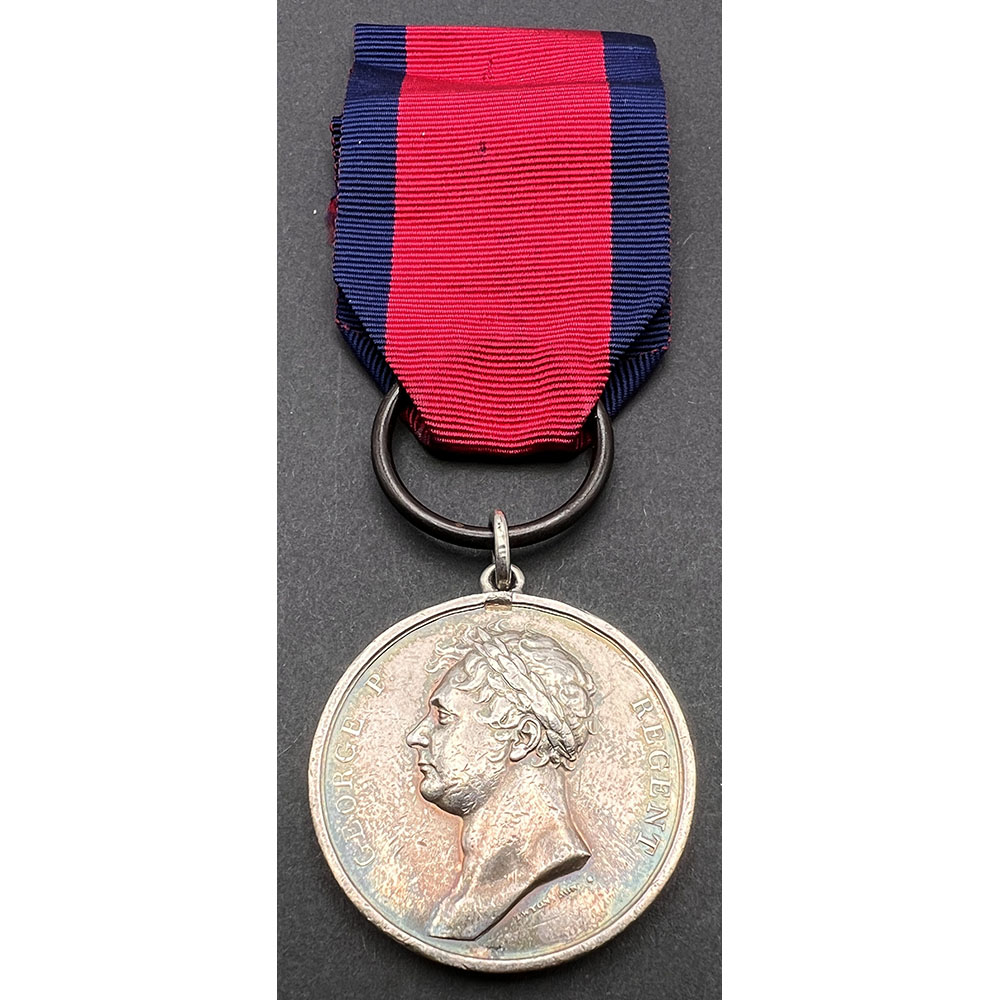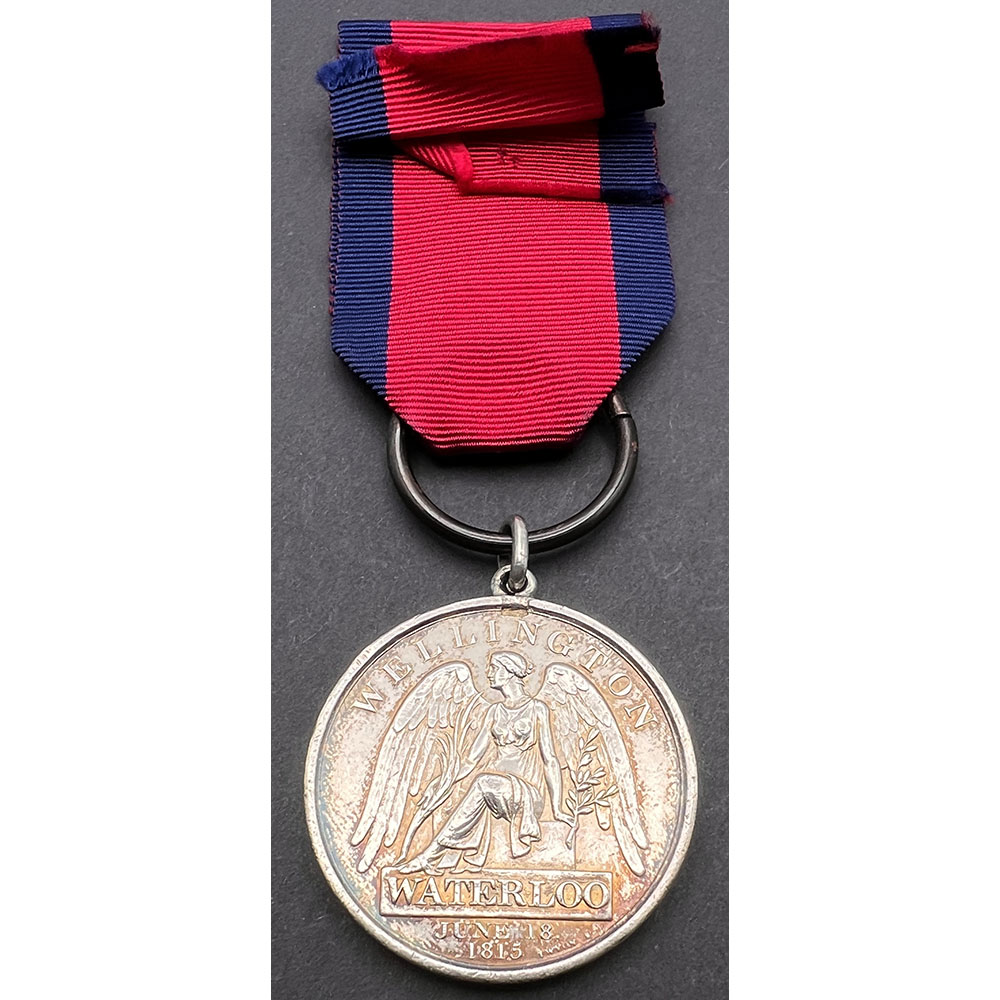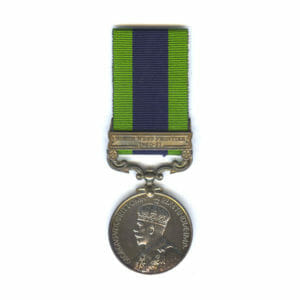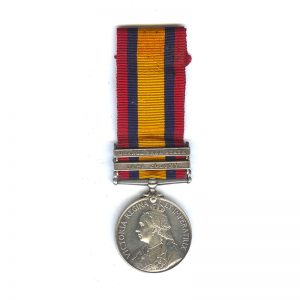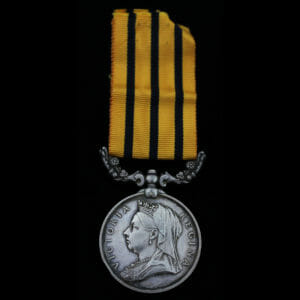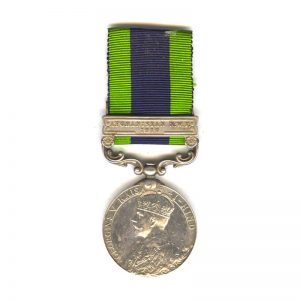Description
Waterloo Medal 1815, Private William Aston, 16th or Queen’s Own Light Dragoons, 16th Lancers, charged at Waterloo with Vandeleur’s Cavalry Brigade, died at Cawnpore during 1823.
“The Heavy Cavalry regiments under Major General Sir William Ponsonby, having by a gallant charge broken several columns of French infantry, were afterwards seen retiring in some disorder before a large body of French Lancers, when Major General Sir Vandeleur moved his brigade to their relief,
And charging the lancers, drove them back, making many of them prisoners. THE SIXTEENTH charged the Lancers with the same gallantry which they had evinced in the Peninsular Campaign”.
Officially impressed: “William Aston 16th or Queen’s Light Drag”
All original naming as issued, with stars filling the gaps as usual, confirmed on the medal roll being present in the troop of Captain J.H. Belle, during the Battle of Waterloo.
Fitted with a small steel ring suspension for wear, suspended by a loop and split ring. Nice and clear impressing.
With comprehensive digital file of high definition images of his entries in the muster rolls and effects upon his death from 1813-1823.
Provenance: This medal was awarded to William Aston after the battle of Waterloo, he went on to continue his service around England and Ireland, before setting off for India, when he died after the regiment had been shipped up the River Ganges to Cawnpore, the regiment took the medal and made sure it found it’s way home from India to his family. (Personal Effects records note)
It was next sold by Glendinings in July 1976.
William Aston, was a plater from Birmingham, when he attested for service with the 16th Light Dragoons on 13th July 1813.
He was recruited and assigned to R. Jebb’s Troop.
When the time came to set off to take on Napoleon, he was as of late March 1815 “On a March for embarkation for Flanders.”
From April to June before the Battle he was “On a March in France.”
On the 18th June 1815, he was engaged at the Battle of Waterloo.
The 16th were possibly the most experienced riders of the British Cavalry in action, having the distinction of being “The sole British Cavalry regiment to serve throughout the Peninsular War and at the Hundred Days
